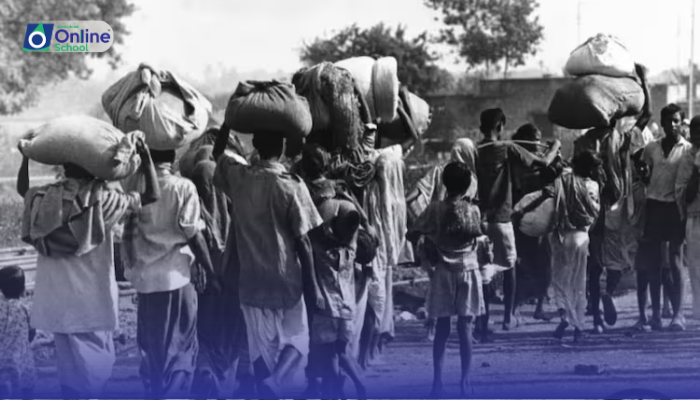
Administrative Problems
Pakistan had to face many administrative problems in her early days. Most of the government functionaries and senior officers serving in the army were Hindus, who migrated to India after the partition was announced, they had to be replaced with raw hand and inexperienced functionaries.
British officers were employed due to non-availability of the Muslim army officers. Most of the officers including the army chiefs were Englishmen, and same was the case with high executive officers and senior bureaucracy like the Governors, Chief Secretaries and Secretaries. Enormous problems were created by the non-Pakistani officers, for example the Quaid-e-Azam ordered the Commander-in-Chief to deploy Pakistan army in Kashmir but he declined to obey the orders.
The city of Karachi was designated as the capital of the newly born state of Pakistan; the city lacked even the most essential facilities required for the running of a government. Offices were set up in military barracks and tents. The Indian government withheld Pakistan's share of stationery items and office equipment, even paper was not available for office use. The Hindu functionaries spoiled the office record before leaving Pakistan. Extremists spoiled the office record when it was being transferred to Pakistan from India. India refused to rent out its aeroplanes for airlifting the officials who had opted for Pakistan, British planes had to be hired for airlifting the record and the personnel.
i. Rehabilitation of Refugees
According to reliable estimates 5.5 million people migrated from Pakistan to India and 6.5 million from India to Pakistan, as a result of the big 1947 exodus. In this way the already feeble economy of Pakistan was made to bear the burden of one million more people.
Rehabiliton of refugees and provision of basic needs for them was an enormous problem. The Quaid-e-Azam established a "Refugee Relief Fund". In this way the problem was soon overcome through the personal efforts of the father of the nation and due to the sense of sacrifice exhibited by the people of Pakistan.
ii. Division of Assets
At the time of Partition the total currency reserves of the United India were estimated at Rs. Four billion. According to the partition formula Pakistan was entitled to receive Rs. One Billion as her share, but the Indian government agreed to pay only Rs. 75 crores (0.75 billion) out of it. After the payment of Rs. 20 crore the balance was withheld
on one pretext or the other. On Gandhi's insistence another Rs. 50 crores were paid, but the balance amount of Rs. 5 crore was never paid. On the other hand, 20 percent of the total debt, which the government of United India owed, was made Pakistan's liability. Some of the functionaries spoiled the official record, and mutilated the factories and the military equipment before leaving for India; they did not spare even the hospital equipment which was to be used for the treatment of the patients.
Division of the military assets began when the process of partition started; Liaquat Ali Khan demanded that a transparent formula for the division of the armed forces and their assets should be devised. Defence Minister Sardar Baldev Singh and the Commander in Chief ignored his demand. However, in July 1947 it was decided that the armed forces will be divided into two parts. A committee under the chairmanship of Field Marshal Auchinleck was formed to. implement the scheme. The Indian government did everything to flout the Auchinleck Committee's efforts for a just division of assets. Disappointed at the Indian government's uncompromising attitude the Field Marshal decided to wind up his task four months ahead of time. Sending a report, the British government on Sept. 28, 1947 Auchinleck wrote:
"I have no hesitation, whatever, in affirming that the present Indian Cabinet are implacably determined to do all in their power to prevent the establishment of the Dominion of Pakistan on firm basis".
Departure of the Committee gave India a free hand to fulfil its designs. The Indian government gave Pakistan only a small part of her share in the military assets, even that was not in working condition and was badly mutilated. The aircrafts and ships sent to Pakistan were not in working condition. At the time of partition there were sixteen ordnance factories in the sub-continent, all went to Indian share. Thus, Pakistan started its new life with a small military force having absolutely meagre resources.
iii. Canal Water Dispute
Canals irrigating the Indus Basin worked in an integrated network in the British period. At that time it was considered to be the biggest and the most efficient system of irrigation throughout the world. In 1947 this system was cut into two parts. As a result of this dissection, heads of the three rivers, (The Sutlej, Ravi and Beas) and many other head-works were given to India. Towards the end of the year 1947, the position further deteriorated, a part of Kashmir was occupied by India and the upper parts of the two more Pakistani rivers the Chenab and the Jhelum were also taken over by India, assuming full control over Pakistan's waters. In April 1948 India cut water supplies in the canals irrigating the area in the vicinity of Lahore. As a result of this, ripe crops on thousands of acres were destroyed. In this way India exhibited her negative potentials of posing real threats to Pakistan's agrarian economy.